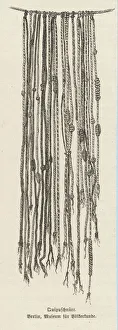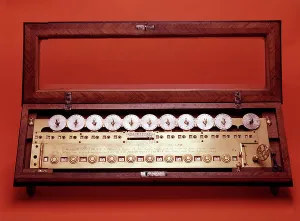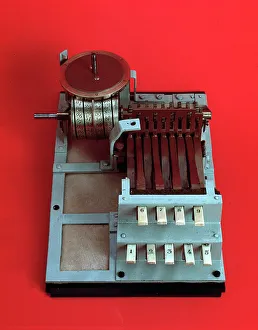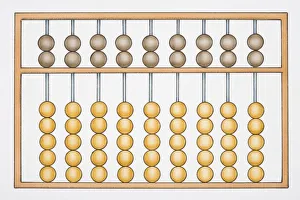Calculators Collection
"From Ancient Quipus to Modern Calculators: A Journey through Mathematical Ingenuity" In the 1930s, M. I. T
All Professionally Made to Order for Quick Shipping
"From Ancient Quipus to Modern Calculators: A Journey through Mathematical Ingenuity" In the 1930s, M. I. T. Introduced a groundbreaking calculator that revolutionized mathematical computations. However, long before this technological marvel, the Peruvian Quipu served as an ancient precursor to calculators. An Inca using a quipu would manipulate its knotted strings to perform basic arithmetic. Advancing further in history, we encounter Pascal's Calculator, invented by Blaise Pascal in the 17th century. This mechanical wonder crafted from brass and silver allowed for complex calculations with ease. Samuel Morland's innovative mechanical calculator also made its mark during this time period. Fast forward to Tito Gonnella's creation in 1896 – an object that combined functionality and beauty into one remarkable calculator. Its intricate design showcased both craftsmanship and mathematical prowess. The Tubular Slide Rule emerged as a popular tool for engineers and scientists alike, offering quick solutions without electronic components. Meanwhile, the New Calculating Machine of yesteryears left us mesmerized with its engraved details depicting mathematical precision. Thomas Arithometer of 1851 brought forth yet another milestone in calculating technology – a device that simplified complex operations while maintaining accuracy throughout calculations. Odhnér's Calculator of 1904 took inspiration from previous inventions but added new features like automatic carry propagation mechanisms for faster results. Even beyond borders, Mexican Quipus made their appearance in 1857 as an alternative method of calculation rooted in indigenous cultures' wisdom and knowledge systems. As we reflect on these historical artifacts such as Pascals' Calculators or Mexican Quipus, it becomes evident how human ingenuity has continuously strived towards simplifying complex mathematics throughout centuries.


















